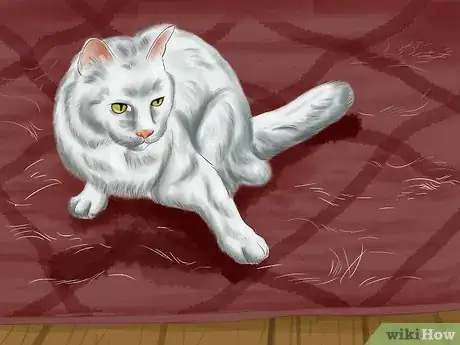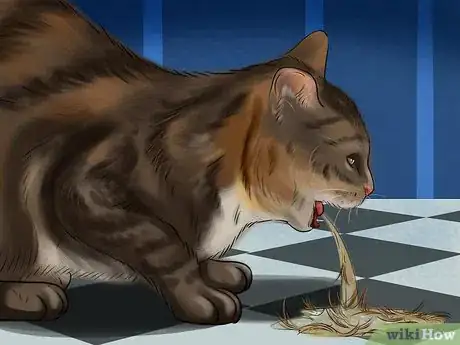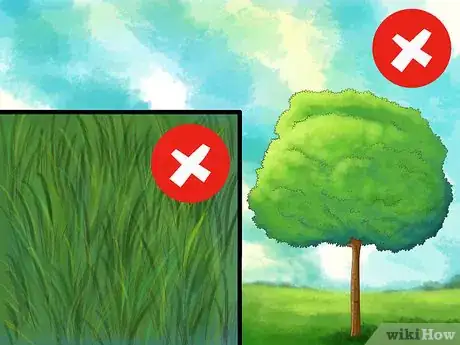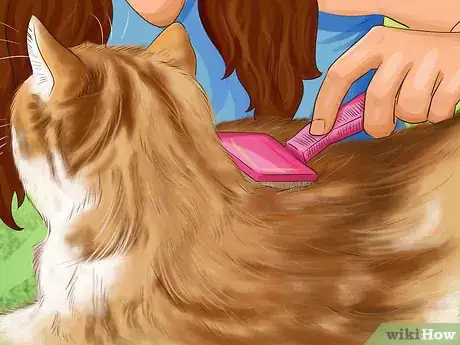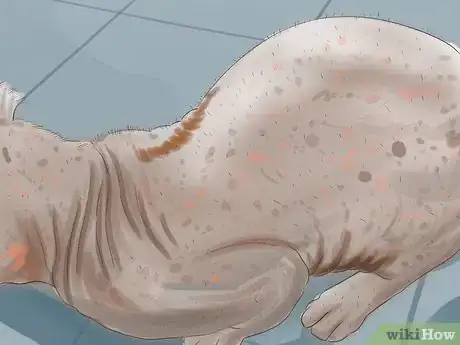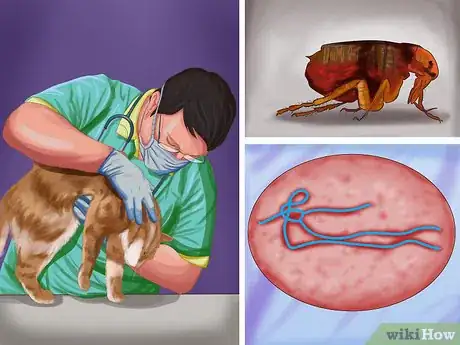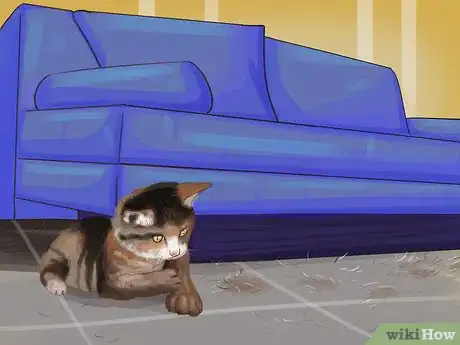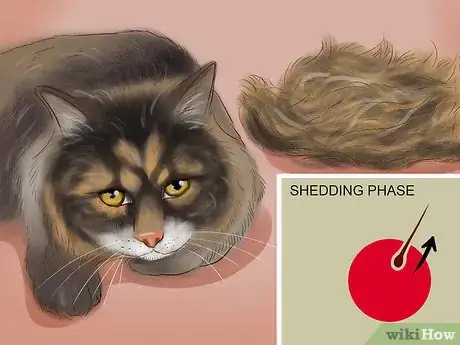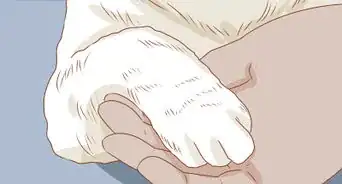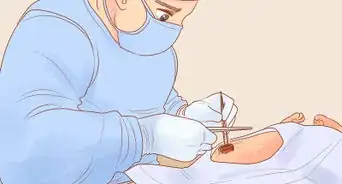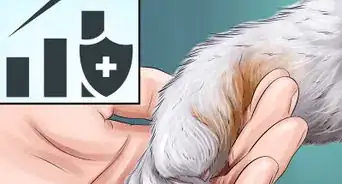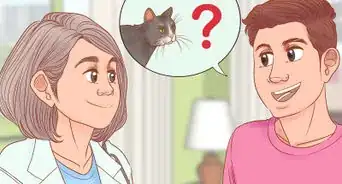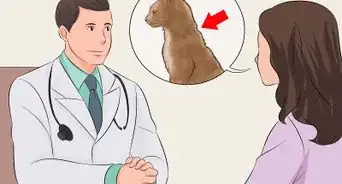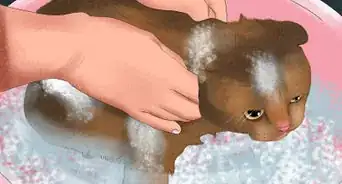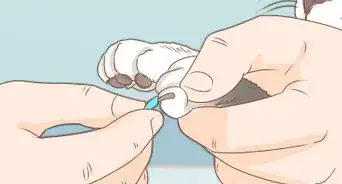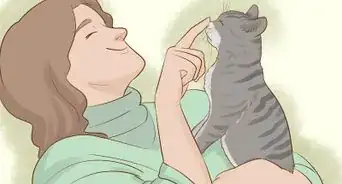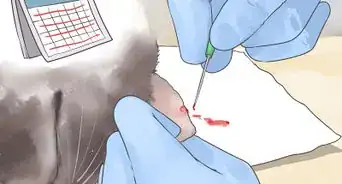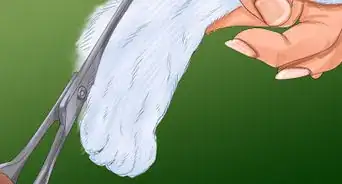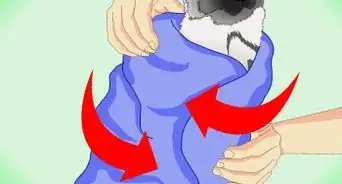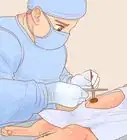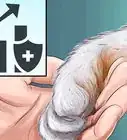This article was co-authored by Deanne Pawlisch, CVT, MA and by wikiHow staff writer, Jessica Gibson. Deanne Pawlisch is a Certified Veterinary Technician, who does corporate training for veterinary practices and has taught at the NAVTA-approved Veterinary Assistant Program at the Harper College in Illinois and in 2011 was elected to the board of the Veterinary Emergency and Critical Care Foundation. Deanne has been a Board Member of the Veterinary Emergency and Critical Care Foundation in San Antonio, Texas since 2011. She holds a BS in Anthropology from Loyola University and an MA in Anthropology from Northern Illinois University.
This article has been viewed 25,040 times.
Does it feel like you're always vacuuming up cat hair or finding it on your clothes? If you're concerned that your cat is shedding excessively, you'll first need to decide what is normal shedding for your cat. Just paying attention to how much hair you brush away is a good start. Consider if your cat is going through a shedding cycle. If you believe your cat is shedding more than usual, you should check its skin for signs of irritation or discomfort. You should also contact the vet if you think your cat is shedding an excessive amount or if you believe the shedding is unusual in any way.
Steps
Monitoring Your Cat's Environment
-
1Look for unusual shedding. You've probably found cat hair that's rubbed off onto your clothes or your furniture. These are usually a few hairs here and there which are no cause for concern. But if you notice large clumps of hair throughout your home, your cat may be shedding more than normal.
-
2Watch for hairballs. Most cats groom themselves frequently, so you may not notice clumps of fur being shed. But if your cat is grooming itself more because of excessive shedding, you'll probably find your cat regurgitating hairballs. Keep track of how often your cat has hairballs, since frequent hairballs may be a sign that your cat is shedding more than normal.[1]
- Some veterinarians suggest that passing hairballs is completely normal for cats, especially if they only do it every week or two.[2]
Advertisement -
3Think about any changes to your cat's environment. Cats are highly sensitive to their environment, which can create allergic reactions. If your cat is allergic to something, you may notice them shedding more, especially during the same season every year. For example, if you notice your cat shedding more over a short period of time when a specific plant blooms, your cat may be allergic to the plant. The only way to determine an allergy for sure is to get a skin test from from a board-certified veterinary dermatologist. Your cat may be allergic to:[3]
- Trees
- Grass
- Weed pollens
- Fabrics such as wool or nylon
- Rubber and plastic materials
- Fleas or dust
Observing Your Cat
-
1Brush your cat. Buy grooming supplies like grooming gloves, brushes, and combs, so you can brush your cat. Try to brush your cat every few days to remove excess hair and track how much hair your cat is shedding. Regular brushing will help you decide if your cat is shedding more than normal.[4]
- If you have a long-haired cat, use a long comb that can brush all the way to your cat's skin.
-
2Look for irritated skin. After you've brushed your cat's fur, look at its skin. The skin should be white. If it looks red, bumpy, or irritated and you think your cat is shedding too much, you should take your cat to the vet. This is especially important if your cat seems bothered by a patch of its skin or fur.[5]
- You should also look at the texture of your cat's fur. If some parts of the fur feel different, your cat may have a health condition that needs to be checked.
-
3Take your cat to the veterinarian. If you're concerned that your cat is shedding more than is normal, you notice bald patches, or your cat's skin appears irritated, take your cat to the vet. Your cat might need to be treated for a health issue like:[6]
- Allergies or poor diet
- Ringworm
- Bacterial infection
- Fleas
- Hormonal imbalance such as hyperthyroidism
Recognizing Normal Shedding
-
1Monitor your cat's daily shedding. All cats shed a little hair each day. You're probably aware of what's normal for your cat without even realizing it. The fact that you're concerned your cat may be shedding more may be a sign that your cat is actually shedding more hair.
- You can look at your clothes, furniture, carpets, and the cat's resting spaces to see how much hair has been shed.
-
2Decide what is normal for your cat. If you have a short-haired cat, it may not shed as fast as a long-haired cat. You should also remember that shedding amounts will depend on if your cat is an indoor or outdoor cat. Outdoor cats usually have two large shedding cycles when the seasons and daylight amounts change. Your cat's shedding will be much steadier if it's a strictly indoor cat.[7]
- If you have an indoor cat, it will probably shed steadily throughout the year because it isn't exposed to changes in daylight.
-
3Consider if your cat is in a shedding cycle. Your cat will go through one or two long shedding cycles during the year. This will help your cat's coat adjust for changing seasons. For example, a long-haired cat may shed as the weather turns colder, so it gets a winter coat.[8]
- If your cat is going through a seasonal shedding cycle, it will shed fur from all over its body, not just in one spot or patch.
References
- ↑ http://consciouscat.net/2014/04/25/hairballs-normal/
- ↑ https://www.vet.cornell.edu/departments-centers-and-institutes/cornell-feline-health-center/health-information/feline-health-topics/danger-hairballs
- ↑ http://www.peteducation.com/article.cfm?c=1+2141&aid=502
- ↑ https://petcentral.chewy.com/how-to-manage-your-young-cats-shedding/
- ↑ https://www.care.com/c/stories/6327/cat-losing-hair-how-much-shedding-is-normal/
- ↑ http://pets.webmd.com/shedding-cats
- ↑ http://pets.webmd.com/shedding-cats
- ↑ https://petcentral.chewy.com/how-to-manage-your-young-cats-shedding/
About This Article
To tell if your cat is shedding more than normal, keep an eye out for signs of excessive shedding, like large clumps of fur and frequent hairballs. Keep in mind that all cats shed a little bit every day, and occasional hairballs are normal, so you probably only need to be concerned if the shedding seems excessive and is getting worse. In addition to excessive shedding, you might notice bald patches or skin irritation. If you're worried about your cat's shedding, take it to see a vet so they can help you figure out what's causing it, like allergies, parasites, or an infection. For advice from our Veterinary co-author, like how to recognize normal shedding in cats, keep reading!
